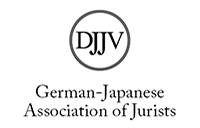The Japanese Work-Style Reform 2019
From the Practitioner’s Perspective
Abstract
The Japanese Act on Arrangement of Relevant Acts to promote the Work-Style Reform (“Work-Style Reform”) was promulgated on 6 July 2018 and is implemented consecutively starting from 1 April 2019. The Work-Style Reform aims to reduce excessive overtime hours and to promote a more balanced flexible working style. To this end, for the first time, inter alia a clear and legally binding ceiling on overtime working hours will be established. Another aim of the Work-Style Reform is to ensure fair labor conditions regardless of the employment status which becomes more and more important considering the change of the Japanese labor market with “non-regular” employment positions steadily increasing. Therefore, the “Equal Pay for Equal Work”-principle was solidified under the Work-Style Reform to provide for an equal treatment of regular and non-regular employees. This article summarizes the main changes introduced by the Work-Style Reform and gives an overview on the practical responses employers should take in light of the reform.






